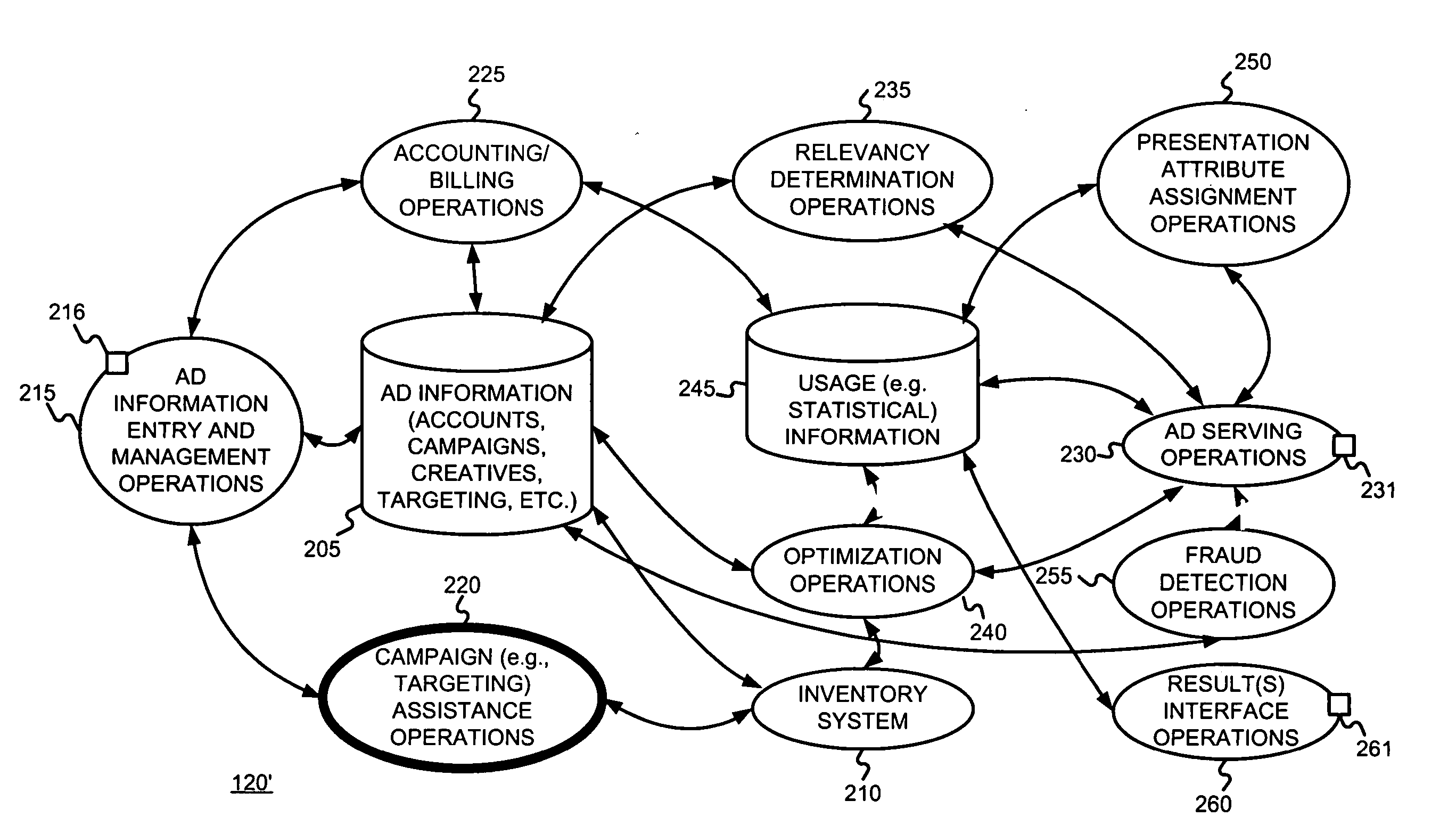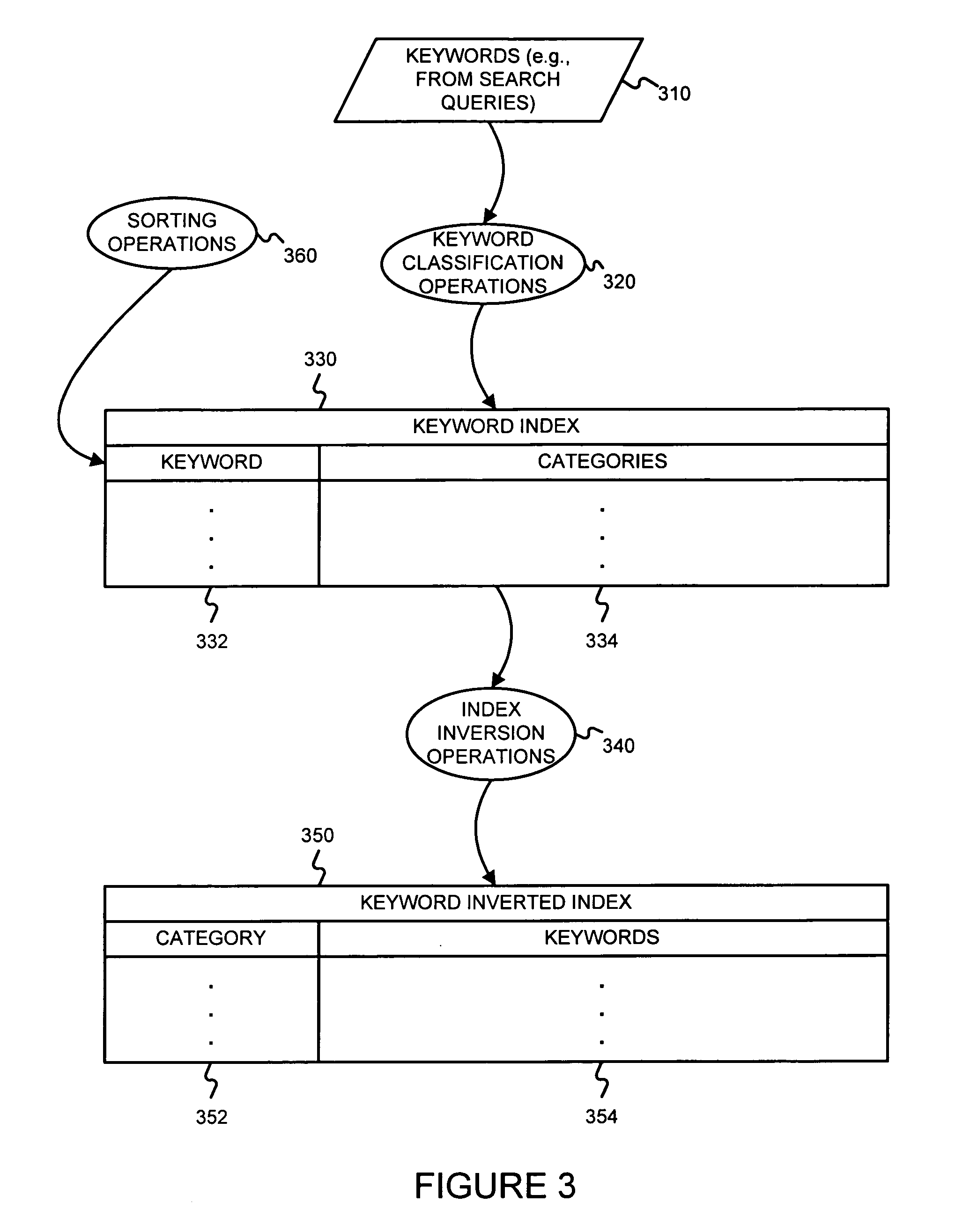Suggesting and/or providing targeting criteria for advertisements
a technology of targeting criteria and advertisements, applied in the field of advertisements, can solve the problems of difficult identification and elimination of waste, high cost of advertising investment, and high cost of advertising investment, and achieve the effect of reducing and increasing the cost of advertising investmen
- Summary
- Abstract
- Description
- Claims
- Application Information
AI Technical Summary
Benefits of technology
Problems solved by technology
Method used
Image
Examples
Embodiment Construction
[0037] The present invention may involve novel methods, apparatus, message formats and / or data structures for suggesting and / or providing keywords used to target ads (referred to as “targeting keywords”). The following description is presented to enable one skilled in the art to make and use the invention, and is provided in the context of particular applications and their requirements. Various modifications to the disclosed embodiments will be apparent to those skilled in the art, and the general principles set forth below may be applied to other embodiments and applications. Thus, the present invention is not intended to be limited to the embodiments shown and the inventors regard their invention as any patentable subject matter described.
[0038] In the following, environments in which, or with which, the present invention may operate are described in § 4.1. Then, exemplary embodiments of the present invention are described in § 4.2. Examples illustrating operations of exemplary e...
PUM
 Login to View More
Login to View More Abstract
Description
Claims
Application Information
 Login to View More
Login to View More - R&D
- Intellectual Property
- Life Sciences
- Materials
- Tech Scout
- Unparalleled Data Quality
- Higher Quality Content
- 60% Fewer Hallucinations
Browse by: Latest US Patents, China's latest patents, Technical Efficacy Thesaurus, Application Domain, Technology Topic, Popular Technical Reports.
© 2025 PatSnap. All rights reserved.Legal|Privacy policy|Modern Slavery Act Transparency Statement|Sitemap|About US| Contact US: help@patsnap.com



